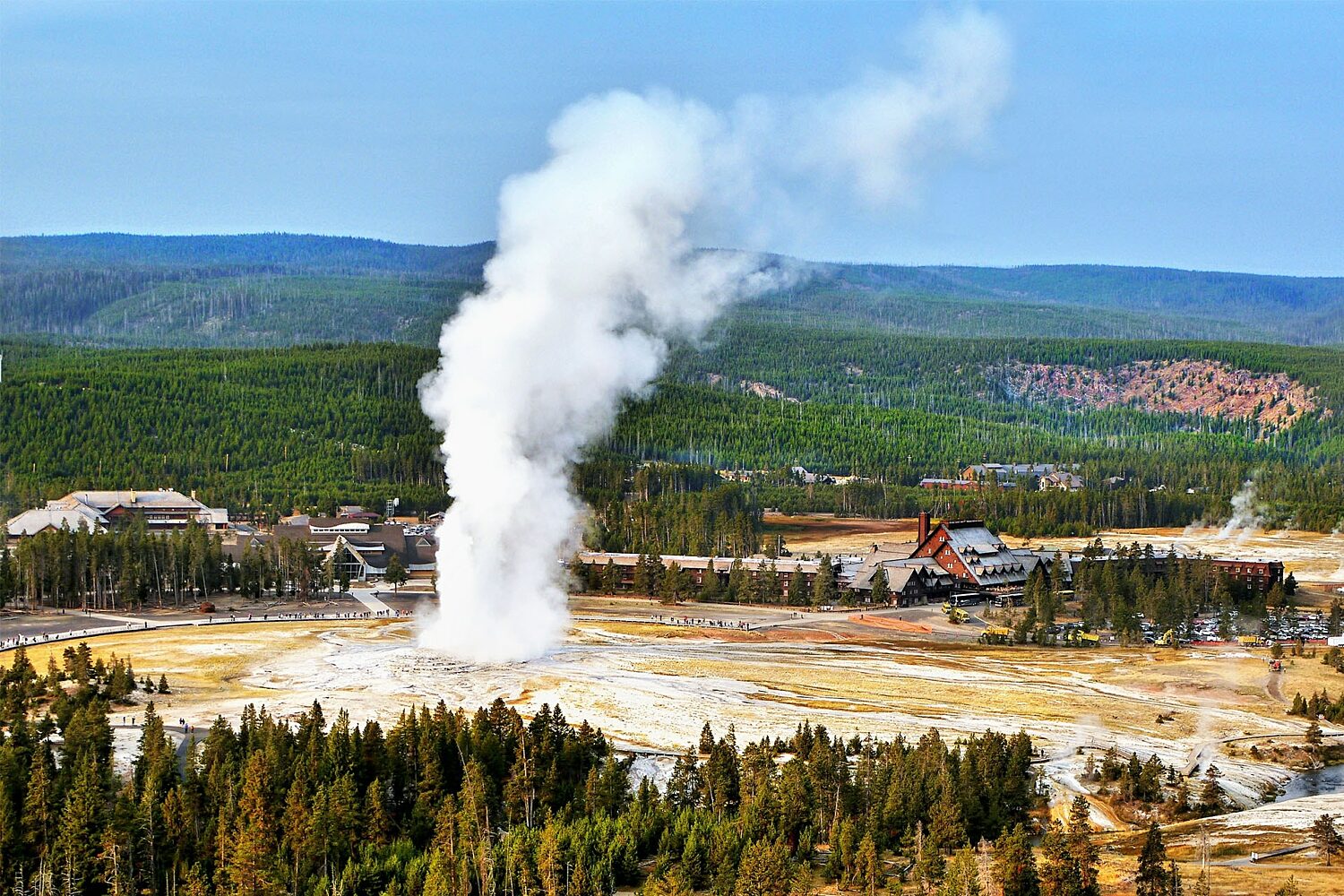
The History Behind Old Faithful
04/05/2022
A word association game played with Yellowstone could turn up any number of natural wonders. From paint pots to hot springs, sulfur-rich yellow rocks that gave the park its name, and bears, bison and moose, there are plenty of things Yellowstone is known for. But one stands above the rest, sparking interest and amazement: Old Faithful. The geyser has been going off like (almost) clockwork for centuries now, and though you can’t quite set your watch to it, you’re pretty much guaranteed a geyser view when you visit. But what’s Old Faithful’s origin story? How did it come to be, and what were the experiences of the first people to see it? Here’s a short history of the beloved Old Faithful geyser in Yellowstone.
Old Faithful’s Unknown Origins
The age of Yellowstone’s geysers, including Old Faithful, remains uncertain. The good news is that scientists are on the case, so it’s likely they’ll come to a conclusion at some point—stay tuned! For now, it’s clear that the giant geyser cones of Yellowstone take hundreds, if not thousands, of years to form. And it’s unlikely that geysers were erupting from under the ice sheet formed in the last ice age, 15,000 years ago. So that helps narrow down the timeframe somewhat.
Old Faithful itself has had a history of ebbs and flows. The gaps between eruptions have grown a bit since the 1959 Hebgen Earthquake, leaving us with only about 20 eruptions each day instead of 21. And evidence of tree remains around the base of the geyser suggest that it might have stopped altogether sometime in the last few hundred years. Plants don’t do so well when they’re constantly scalded by 200-degree-Fahrenheit water. So for trees to grow, those 106- to 184-foot eruptions must have hit pause for a time. But most of what we know about the geyser, we’ve learned since documented observations began in 1864.

Early Witnesses
We don’t know what Native Americans observed and thought of the impressive water show that is Old Faithful. But researchers have found flakes of obsidian around the whole geyser basin, which makes it pretty clear that tribes were familiar with the area.
The first reported experience of the geyser that we have record of comes from 1864, when George Harvey Bacon—a gold prospector—talked about a geyser that was so regular in its eruptions that it later got the name Old Faithful. It got its name—and first official mention—in 1870, from the Washburn-Doane-Langford expedition. From there, it was an instant hit.
Tourism and Stewardship
When you visit today, you can get that same sense of amazement, that adrenaline rush that comes from witnessing the power of the natural world, as those early viewers must have felt. Though wait times between eruptions aren’t exactly consistent, the length of the preceding eruption gives a nearly precise estimate of when the next eruption will happen.

Even though that Washburn expedition didn’t have the apps and digital clock readouts in a visitor center like we do to predict the next eruption, they still marveled at the geyser’s consistency. Its discovery helped make Yellowstone an icon as the nation’s first national park.
As a modern-day steward of this historic landmark, you can do your part by observing posted rules and regulations, and keeping on the boardwalk and off the fragile geothermal crust around the geyser. And most of all, you can continue to enjoy the space and its splendor, learning all you can to pass on to the coming generations that will help shape its future.
When your path takes you to Yellowstone, find your spot at a Highline Adventures property. Convenient locations in gateway communities make it easy to experience the park while you prioritize sustainability.